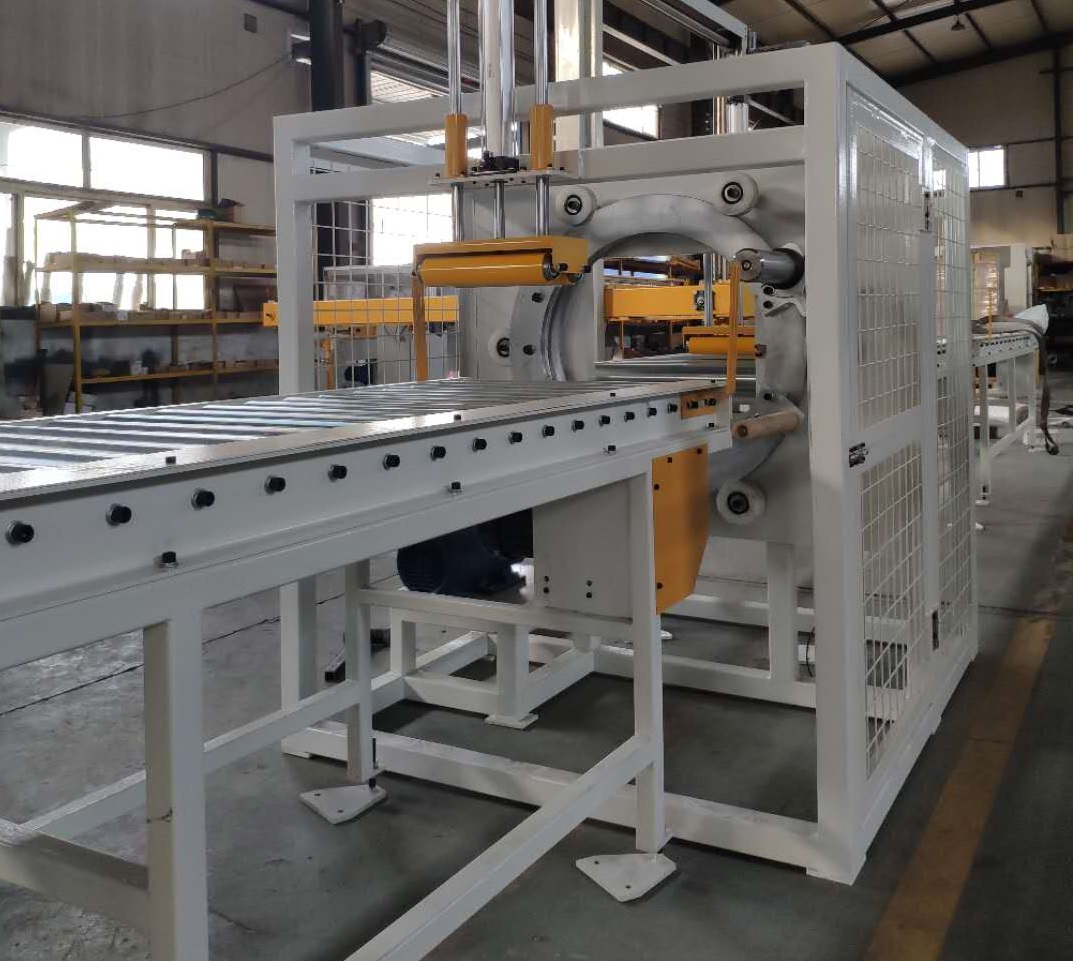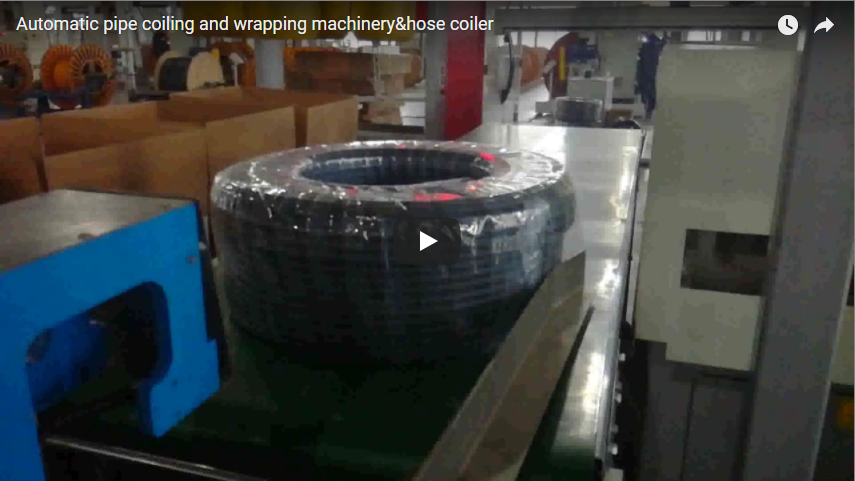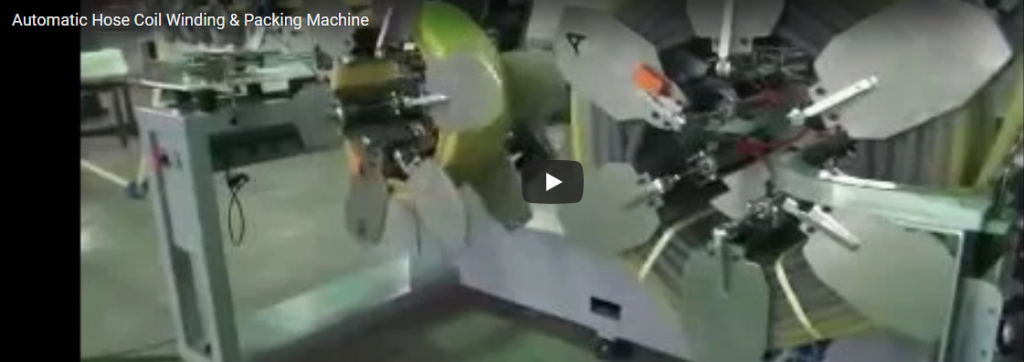Streamlining Aluminum Profile Wrapping: Enhancing Efficiency and Protection in Manufacturing

Introduction: The Critical Role of Packaging in Aluminum Profile Manufacturing
Aluminum profiles are foundational materials across diverse sectors, including architectural construction, automotive manufacturing, electronics housing, and advanced packaging systems. Their inherent properties—lightweight strength, durability, and excellent corrosion resistance—make them indispensable. However, efficiently and safely packaging these profiles, particularly long extrusions and bundled configurations, presents significant logistical and operational hurdles for manufacturers and distributors.
The traditional reliance on manual packaging methods often proves inadequate in today's high-volume, quality-sensitive production environments. As highlighted by industry studies on packaging efficiency, manual processes can account for a substantial portion of handling costs and are frequently linked to product damage during transit. For operations like those of our customer in Ho Chi Minh City, Vietnam, the limitations of manual wrapping translate directly into operational bottlenecks, increased labor expenditure, inconsistent package quality, and heightened risks of product damage and workplace injuries. This article delves into the challenges of manual aluminum profile packaging and presents horizontal orbital stretch wrapping technology as a robust, automated solution, supported by insights from industry practices and technological advancements.
The Fabricator's Challenge: Limitations of Manual Aluminum Profile Wrapping
Manufacturers grapple with several critical pain points stemming from manual wrapping processes:
1. Labor Intensity and Throughput Constraints
Manual wrapping is inherently labor-intensive, often requiring multiple personnel for tasks ranging from surface protection application (film covering) to bundle collation, counting, wrapping, and stacking. A typical manual process might involve 2-3 workers per station. According to ergonomic studies, repetitive manual wrapping tasks also contribute to worker fatigue and musculoskeletal disorders over time. This reliance on manual labor not only inflates operational costs but also caps the overall packaging throughput, struggling to keep pace with modern extrusion line speeds. Manual wrapping speeds are often cited at less than 6 meters per minute, significantly slower than automated alternatives.
2. Inconsistent Packaging Quality and Protection
Achieving consistent tension and overlap with manual wrapping is challenging. Human variability can lead to unevenly wrapped bundles, wrinkles in protective surface films, or trapped air bubbles, compromising the package's integrity and protective qualities. Research published in packaging journals often emphasizes the importance of uniform film application and tension control for optimal load containment and surface protection, aspects difficult to guarantee manually. This inconsistency directly increases the risk of abrasion, scratches, and deformation during handling and shipping.
3. Elevated Risk of Product Damage
Manual handling of often long, heavy, and sometimes sharp-edged aluminum profiles poses a significant risk of damage. Surface scratches, dents from collisions during bundling, and crushing damage during stacking are common issues. The lack of precise control during lifting (even with crane assistance) and stacking (insufficient spacing) exacerbates this problem. Industry reports often correlate manual handling steps with higher rates of product damage, leading to costly scrap, rework, and customer dissatisfaction.
4. Workplace Safety Hazards
Manual wrapping exposes workers to several hazards. Repetitive motion injuries are a concern, as is the risk associated with handling sharp profile edges. The use of overhead cranes for lifting heavy bundles introduces risks of swinging loads potentially striking personnel. Automation, as advocated by safety organizations like OSHA, significantly mitigates these ergonomic and impact-related hazards by removing direct human interaction from the most strenuous and dangerous tasks.
The Automated Solution: Horizontal Orbital Stretch Wrapping Technology
To overcome the inherent limitations of manual methods, manufacturers are increasingly adopting automated packaging solutions. The horizontal orbital stretch wrapper emerges as a particularly effective technology for long products like aluminum profiles. This system automates the wrapping process, providing consistent, high-speed, and secure packaging.
Core Operational Principles
Horizontal orbital wrappers operate by passing the aluminum profile or bundle horizontally through a rotating ring. This ring carries a spool of stretch film (or other wrapping materials like VCI paper or protective films). As the product moves through the machine, the ring rotates, dispensing the film and wrapping it around the profile bundle in a spiral pattern. Advanced systems incorporate sophisticated tension control and precise overlap settings, ensuring a uniform, secure wrap tailored to the product's requirements. Technologies similar to those described in patents for orbital wrapping mechanisms (e.g., detailing film carriage designs and pre-stretch systems) ensure efficient material usage and optimal load containment.
Key Performance Parameters:
- Wrapping Speed: Standard machines typically operate at speeds of 15-25 meters per minute, with high-speed configurations reaching up to 40 meters per minute or more, drastically outpacing manual methods.
- Material Flexibility: Supports various materials, including LLDPE stretch film, VCI film/paper for corrosion protection, PE surface protection films, and Kraft paper. Dual-layer wrapping capability allows for simultaneous application of different materials (e.g., protective film followed by stretch wrap).
- Automation Level: Features often include automatic film clamping, cutting, and wiping, minimizing operator intervention. Integration with programmable logic controllers (PLCs) allows for recipe management, package tracking, labeling integration, and data logging for quality assurance.
- Labor Reduction: Typically requires only one operator primarily for monitoring and replenishing packing materials, significantly reducing labor costs compared to manual crews.
Technical Advantages and Customization
Modern horizontal stretch wrappers offer features designed for performance, reliability, and adaptability:
1. Enhanced Efficiency and Throughput
Automation drastically reduces cycle times. By integrating wrapping with infeed and outfeed conveyor systems, a seamless, continuous flow can be established, eliminating bottlenecks and maximizing production line output (OEE improvements). Features like automatic material checking and reload alarms further minimize downtime.
2. Superior Packaging Consistency and Protection
Automated control systems maintain precise film tension and overlap percentages (typically adjustable, e.g., 30-70% overlap). This ensures every bundle receives a uniform, tight wrap, providing consistent protection against dust, moisture, and handling damage. The smooth, wrinkle-free application preserves the aesthetic quality of surface-critical profiles.
3. Significant Improvement in Worker Safety
Automating the wrapping process removes workers from hazardous manual handling and repetitive tasks. Machines are typically enclosed within safety fencing with interlocks and light curtains, adhering to international safety standards (e.g., ISO 13849), preventing accidental contact during operation and drastically reducing ergonomic risks and potential impact injuries.
4. Reduction in Material Waste and Product Damage
Optimized pre-stretch systems (often achieving 200-300% stretch) reduce film consumption compared to manual wrapping. The consistent, secure wrap minimizes product movement within the bundle, significantly reducing scratches, dents, and deformation during transit. Documented case studies frequently report damage reductions exceeding 50-70% after implementing automated wrapping.
5. Customization for Specific Needs
These systems are highly configurable. Key customization options include:
- Ring Diameter: Chosen based on the maximum cross-section of the profile bundle (e.g., accommodating bundles up to W200mm x H200mm or larger).
- Conveyor Systems: Designed to handle specific product lengths (e.g., L7000mm) and weights, with options for powered rollers, belts, or chain conveyors. Integration with upstream (bundling, stacking) and downstream (labeling, palletizing) equipment is common.
- Control Systems: Integration with plant-level MES or ERP systems for data exchange and process control.
- Wrapping Materials: Compatibility with specific protective films or papers required by the application.
Key Features Driving Performance
- Orbital Wrapping Mechanism: Ensures complete, 360-degree coverage for optimal protection.
- Powered Pre-Stretch Carriage: Maximizes film yield and provides consistent tension control, reducing material costs.
- Adjustable Conveyor Speed and Ring Rotation: Allows fine-tuning for different product types and desired wrap patterns.
- User-Friendly HMI (Touchscreen): Simplifies operation, parameter adjustments (tension, overlap, conveyor speed), recipe storage, and diagnostics.
- Automatic Film Cut & Clamp System: Enables fully automatic operation cycle after cycle.
- Robust Industrial Construction: Designed for durability and reliability in demanding manufacturing environments.
Tangible Benefits:
- Reduced Cycle Time: Faster packaging increases overall plant throughput.
- Lower Labor Costs: Reallocating workers from manual wrapping to higher-value tasks.
- Improved Product Quality: Minimizing transit damage leads to fewer returns and higher customer satisfaction.
- Enhanced Safety: Reduced risk of workplace injuries and associated costs.
- Optimized Material Usage: Pre-stretch systems lower consumable costs.
Real-World Impact: A Case Study Snippet
An aluminum extrusion manufacturer in Southeast Asia transitioned from a manual wrapping process requiring 8 workers per shift to a horizontal orbital wrapping line.
- Before Automation: Packaging was a significant bottleneck, averaging 15 minutes per bundle, with inconsistent quality leading to a high damage rate (estimated >5% of shipped value) and frequent customer complaints. Labor costs for packaging were substantial.
- After Automation: The new system, operated by just 2 technicians, reduced the packaging time to approximately 3 minutes per bundle. Product damage attributed to packaging and transit fell by over 70%. The ROI, factoring in labor savings, reduced damage costs, and increased throughput, was calculated at under 18 months. This aligns with general industry findings where automation investments in packaging often yield rapid returns.
Call to Action: Modernize Your Aluminum Profile Packaging
If your operation faces challenges with manual wrapping efficiency, inconsistent package quality, high labor costs, or unacceptable product damage rates, exploring automated horizontal orbital wrapping technology is a strategic imperative.
Contact our specialists today to discuss your specific aluminum profile dimensions, bundling requirements, and throughput goals. We can provide detailed technical specifications, tailored configurations, ROI analysis support, and arrange a demonstration to showcase how this technology can optimize your packaging process and improve your bottom line.
FAQs
1. Can the horizontal stretch wrapper handle varying profile lengths and bundle sizes? Yes, these machines are designed with flexibility in mind. Ring diameter, conveyor systems, and control software can be configured to accommodate a wide range of profile cross-sections, lengths (from short pieces to very long extrusions), and bundle configurations. Specific parameters are defined during the machine specification process.
2. What is the typical installation and integration process? Installation is typically managed by supplier technicians. The machine is designed for integration into existing production lines, often requiring mechanical positioning, electrical hookup, compressed air connection, and integration with existing conveyor logic. Commissioning includes testing and operator training. Our team provides comprehensive support throughout this process.
3. What level of maintenance is required for the horizontal stretch wrapper? Routine maintenance generally involves lubrication of moving parts, inspection of wear items (like cutter blades and clamp pads), and periodic cleaning. These machines are built for industrial use with high-quality components to ensure longevity. Preventative maintenance schedules and support contracts are typically available.
Investing in automated horizontal stretch wrapping is not just about packaging; it's about enhancing overall operational efficiency, protecting product value, ensuring worker safety, and strengthening your competitive position in the market.






